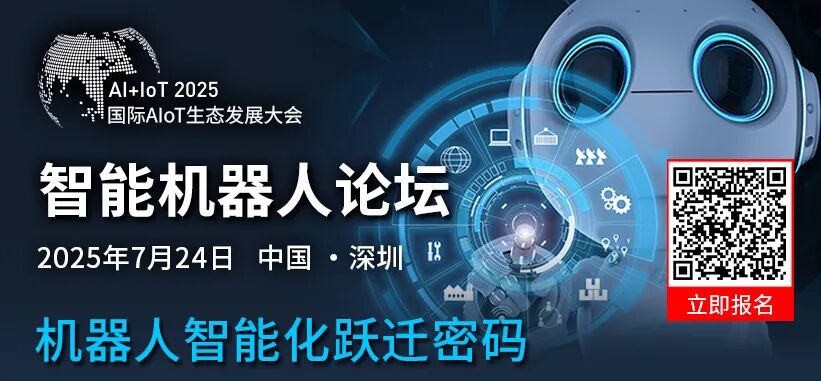Looking back at the year 2024, artificial intelligence (AI) technology has rapidly developed in fields such as mobile devices, personal computers, automotive intelligent driving, digital home appliances, smart healthcare, and industrial applications, becoming the core driving force for innovation and development in multiple areas, providing strong support for the development of almost all sectors. As one of the largest electronic and semiconductor product markets in the world, Chinese companies are actively introducing AI-related technologies, achieving significant accomplishments in edge applications of “Feature + AI” over the past two years. Looking ahead to 2025, the Chinese semiconductor industry is expected to make breakthrough progress in innovation, application expansion, and product upgrades in edge AI technology.
As a provider of graphics processing and AI computing silicon intellectual property (IP), Imagination Technologies has witnessed the growing demand for AI technology in the Chinese semiconductor industry over the past two years. This demand has not only driven the continuous development of Imagination’s IP business in China but has also facilitated deep collaborations with numerous clients, jointly defining and developing edge AI and edge applications based on Imagination’s GPU technology and ecosystem, which are set to be widely applied. These new demands have attracted new customers and ecosystem partners, all working together to transform innovation and creativity into practical engineering solutions.
2025 Hotspot – Edge and Edge AI Technologies and Applications
By 2025, computing demands are expanding from intelligent computing infrastructure to end devices, making the trend of edge and edge AI increasingly evident. This trend is driven by two main factors: first, edge or edge AI is closely integrated with specific applications or businesses, as it can significantly enhance product functionality or user experience; second, the AI capabilities of edge or edge devices require real-time performance and integrity, reducing reliance on bandwidth, allowing trained models to run on an increasing number of edge devices.
For example, in the industrial sector, which emphasizes stability, safety, and reliability, the higher autonomy, collaborative capabilities, efficient resource utilization, predictive maintenance, and rapid process and variety control brought by edge intelligence are becoming important means for enterprises to enhance profitability. Manufacturers need to leverage edge AI models for transformation, which is where Imagination’s expertise lies. Imagination’s solutions are particularly suitable for applications that require real-time responses or cannot transmit data to the cloud due to safety constraints.
Latest AI models are playing a crucial role in intelligent industrial applications. For instance, Vision Transformers are used for real-time anomaly detection; Spiking Neural Networks (SNN) are used to manage event-driven data common in IoT sensor streams; Graph Neural Networks (GNN) are used to understand the interdependencies between components, which is critical for predictive maintenance. These models can run efficiently on edge devices without relying on cloud computing, ensuring data security and supporting real-time decision-making. Furthermore, with Imagination’s GPU acceleration, the performance of these models is further enhanced.
Advanced GPUs Required for Edge/Edge AI
In the past few years, the AI wave centered around large models has highlighted the performance of general-purpose computing GPUs due to their parallel computing capabilities and programmability. However, edge hardware must not only handle inference tasks for a single model but also manage all parallel acceleration tasks, user interaction tasks, and device management tasks on the device. Therefore, edge AI design requires a holistic perspective, where AI use cases must coexist with other functionalities, and more importantly, they must share thermal budgets and manage heat, which has become a new bottleneck as performance increases and transistor density rises. In future edge AI applications, performance per watt (TOPS/W) will be more important than peak performance (TOPS).
Another very important and validated rule in the field of AI models and algorithms is that the only constant is rapid change and iteration. Hardware designers need to enhance the energy efficiency and programmability of accelerators to ensure their devices can meet future demands. Additionally, the diversity of edge/edge devices and applications is also a key factor. Hardware design must not only adapt to currently popular models and specific applications but also support next-generation models and rapidly changing application demands. This requires a combination of hardware and software to build a software stack that can adapt to future developments, avoiding the limitations of accelerators developed for specific models or applications, which is particularly important for Chinese system manufacturers and their main chip suppliers who need to launch new products more quickly.
As excellent accelerators for computing tasks, GPUs have demonstrated outstanding performance, scalability, and programmability in cloud AI workloads. Given these advantages, Imagination is enhancing its AI capabilities based on GPU architecture. This architecture has provided high energy-efficient graphics and computing support for edge devices over the past 30 years and can perfectly pair with RISC-V CPUs and various AI accelerators to form solutions that meet user needs. Through an open-standard-based computing software stack, Imagination is helping developers unleash these capabilities, thereby promoting further development of edge AI.
The Automotive Industry as a Major Driver of the Semiconductor Market in 2025
In 2025, automotive intelligent driving, IoT, and accelerated computing will become the main driving forces for the growth of the semiconductor market. From power systems to infotainment systems, intelligent chips have become key to differentiating automotive performance, forcing manufacturers, first-tier, and second-tier suppliers in the industry to focus more on the implementation of automotive electronic and electrical architectures. This has also led to changes in the supply chain, with new car manufacturers focusing on new energy vehicles or autonomous driving emerging, who pay close attention to automotive electronic architectures and often design automotive controllers themselves.
However, intelligence also brings rising computing costs to automobiles, which will be a pressing issue for the automotive industry in 2025 and beyond. To address this, many intelligent driving chip manufacturers are integrating multiple functions into fewer but more powerful controllers. This trend presents two major technical challenges: first, a controller that manages multiple domains requires a robust hardware virtualization solution for workload priority management and to avoid task interference, such as Imagination’s HyperLane technology; second, functional safety (FuSa), which is the ability to detect and handle faults in a timely and safe manner, is crucial. Any hardware handling safety-critical tasks, such as lane detection, driver monitoring, and braking, must comply with ISO 26262 automotive functional safety standards (ASIL) certification.
These changes and challenges present new opportunities for innovative IP suppliers like Imagination. In terms of the supply chain, Imagination continues to collaborate with partners such as Renesas Electronics and Texas Instruments while also assisting emerging car manufacturers, first-tier suppliers, and chip R&D teams in turning their innovations and ideas into reality, including outstanding innovative teams from China. In terms of technical challenges, in addition to the well-known HyperLane hardware virtualization technology in the industry, Imagination’s DXS GPU IP launched in 2024 not only provides the high computing power required for intelligent driving chips but also creates a groundbreaking distributed functional safety (DSM) solution, helping intelligent driving chip design companies avoid the performance halving (two runs) or chip area doubling (lock-step operation) of traditional FuSa implementation methods.

Figure: Imagination DXS provides up to 9 TFLOPS of performance.
Therefore, in 2025, intelligent driving chip companies will strive to achieve new processor technologies that meet the complex performance, energy efficiency, programmability, and reliability requirements of the latest AI models. Due to their excellent performance and flexible programmability, GPUs have become the preferred platform for AI workloads. Through comprehensive hardware and software collaborative optimization, Imagination DXS has become the most powerful processor to date, providing strong support for the latest driver assistance systems, handling various functions including computer vision and LiDAR point cloud processing.
Imagination is also a provider of advanced GPU IP for cockpit and infotainment systems. Imagination’s GPUs have always supported user interfaces for in-vehicle screens. With a deep understanding of automotive market demands, Imagination’s GPUs are now also used for computing acceleration in ADAS units. The recently released Imagination DXS GPU IP has been licensed and integrated into customer solutions, while Imagination continues to improve the computing software stack to achieve high-performance AI computing on its hardware.
Deeper Innovations Throughout 2025
The rise of emerging technologies (such as RISC-V) and China’s investment in the semiconductor supply chain have encouraged the emergence of many new players. Imagination offers a diverse range of GPU IP cores, extending from wearable devices to desktop and cloud computing, helping these companies achieve success. Imagination is one of the GPU IP suppliers that fully supports RISC-V design, and its products have been widely used in various chips, such as Alibaba’s T-head TH1520 and Etron’s EIC77 series. With the increasing popularity of RISC-V and the emergence of more complex application processors, it is expected that more Imagination GPU IP will be integrated into RISC-V supporting SoCs.
2025 will be an exciting year full of innovations driven by AI technology. From high-end to mid-range computing devices, automobiles, mobile devices, and consumer electronics are all incorporating AI capabilities, helping to break the monopoly and constraints of traditional CPU computing architectures in many fields, promoting the adoption of more flexible and efficient hardware such as RISC-V + GPU, and even tighter integration. China is not only a huge consumer market but also one of the most important links in the global electronic product supply chain, and its market potential can support and incubate chip design companies that adopt new architectures to compete, while Imagination has also prepared corresponding solutions for this market.(Editor: Zhao Mingcan)
This article is from the 2025 magazine of “Electronic Engineering Magazine”, authored by Bai Nong, Chairman of Imagination China and President of Asia Pacific.

